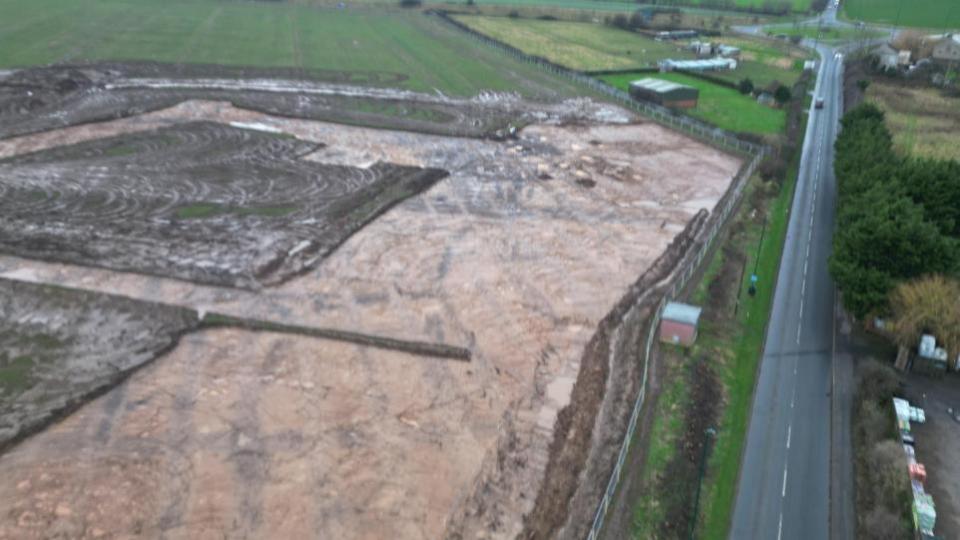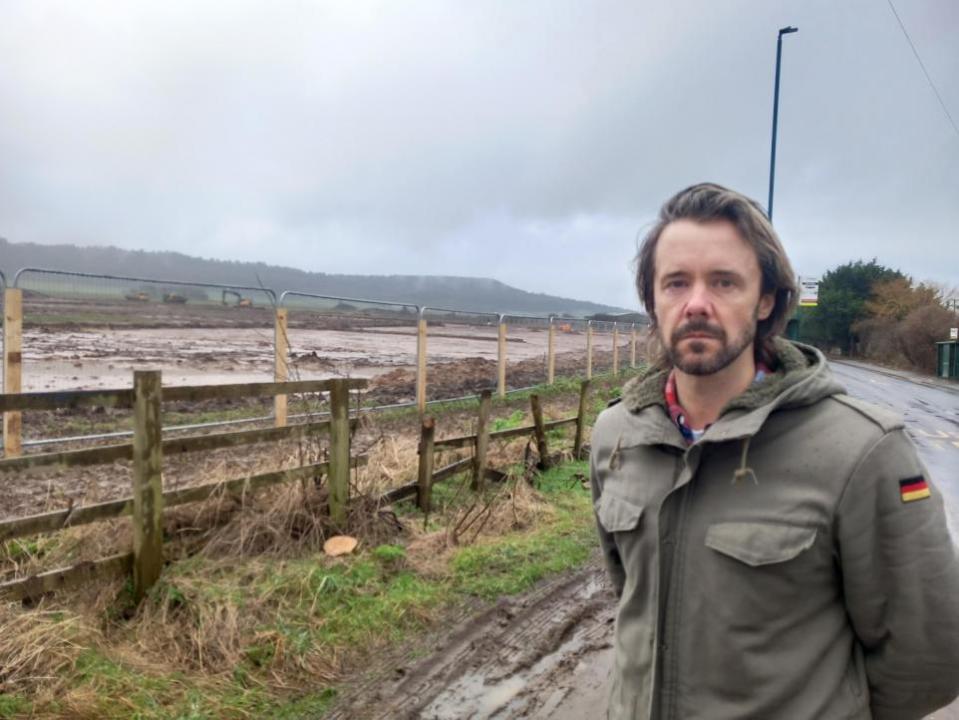Calls have been made to stop major housing construction on the outskirts of Marske following the discovery of historic archaeological remains.
Local council member Dr. Tristan Learoyd claimed that a Roman villa and outbuildings had been unearthed half a mile along a road known locally as Plummers Lane, which was of potential “national importance”.
But developers Taylor Wimpey and Miller Homes said no villas or outbuildings have been found to date, while confirming some ‘Romano-British remains’.
Preparation work is underway for an 812 home development on the green space bounded by Longbeck Road, the A1085 and A174, and there are also permissions for a convenience store, primary school, nursery school, GP surgery and pharmacy, community hall and petrol filling. station, drive-thru restaurant, bar and hotel.
Major Learoyd, who chairs Redcar and Cleveland Council’s planning committee, said he had written to the secretary of state to “ensure that construction is halted until the entire site has been excavated and the historic site is not destroyed”.


The development was first granted outline planning permission in 2017, after more detailed issues were approved by the council at a stormy meeting during which allegations of threats and bullying involving protesters were heard from the then committee chairman, Councilor Stuart Smith.
In November, it was revealed that contractors had mistakenly erected fence posts along the edge of a planned ancient monument adjacent to planned new housing, which is the remains of a manor settlement, dovecote and medieval field system.
Marske resident Peter Finlinson, a local church councilor who has been a leading voice against the plan, said the matter had been reported to Cleveland Police and condemned the “reckless actions”.
Prior to this, local residents had come to the village to publicly express their anger over the cutting of hedges to provide access points for site construction, which was said to have caused wildlife to flee for cover.
Major Learoyd said he understood the archaeological finds had occurred early last year, but only learned of this after visiting the site on his bicycle last week and speaking directly to contractors working on behalf of a local archaeological services company.
He said: “They said they had found Roman ruins – a staircase settlement – I didn’t know what it was and had to investigate.
“I posted on Facebook and other archaeologists started looking at it.”


Major Learoyd said there may be more to uncover and suggested the entire existing planning permission may have to be “cancelled”.
He said: “There’s no way they could build on something like this for me.”
Karl Steanson, who lives in the area and has collected aerial images of the site, said there was strong evidence pointing to a large early settlement, including the potential remains of roundhouses, a type of stone-built dwelling in Britain from the Bronze Age to the Iron Age. and thatched roof.
A spokesman for the Taylor Wimpey and Miller Homes consortium said: “As part of our pre-start work, we are actively working with archaeologists, the council and Historic England to record archaeological remains identified in the geophysical survey at Marske-By-Sea.
“This work has revealed some Romano-British remains, but no Roman villas or annexes have been found to date.
“Our archaeological consultants continue to work diligently with the various parties to ensure that all historical findings are properly preserved.”
The statement stated that all work undertaken was agreed upon with the archaeological consultant of the council, which acts as the local planning authority.
Meanwhile, previously installed fence posts were being removed under archaeological supervision in line with Historic England guidance, without any impact on the planned monument.
A spokesman for Historic England said: “We are aware of an archaeological discovery on the site of a housing development in Marske-by-the-Sea and are providing technical advice to the developer’s archaeological contractor.
“It is our understanding that the contractor followed best practice in this regard and worked in close consultation with local authorities.”
Councilor Lynn Pallister, cabinet member for growth and enterprise, said existing planning permission included a condition for developers to explore land opposite the planned ancient monument and those findings had already been shared with the council.
He said: “The wider site was not subject to any archaeological conditions, but the developer agreed to carry out further archaeological work to ensure the land was recorded before development continued.”